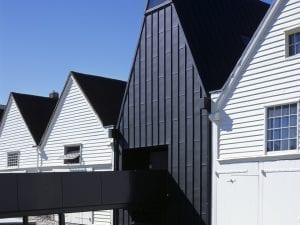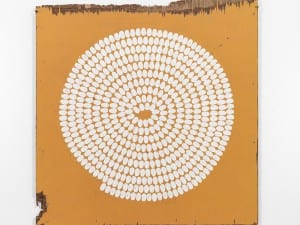Text by Bethany Rex
Tina Hage (b. Port-au-Prince) is a London-based artist. She grew up in Düsseldorf and studied at the Academy of Media Arts in Cologne until 2004 and then completed her Masters in Fine Art at Goldsmiths in 2009. Gestalt, Hage’s first solo-show in London, opened earlier this month at Tenderpixel. We spoke to Tina about her work and future plans.
BR: Tell me about Gestalt. What are the bare bones of the project and where didit begin?
TH: Mywork starts with found images particularly those from newspapers and onlinemedia. I often look at journalistic images and have amassed a large collection of these,so I have become very aware of the various uprisings in different countriesthat have sprung up since the end of 2010.
Whatinterests me is that all the protesters from these diverse places appear to bepeople on the street as opposed to seasoned activists and are self-organised.However, the actions of the UK rioters cannot been seen in the same context asthe protesters in Egypt for example.
Thereis clearly an unplanned movement of masses in a swarm like mentality which usessocialmedia and networking to communicate. The result of this is an almost spontaneousphysical presence on the street. Theprotesters are mostly anonymous; there is no confirmed leader and most of thetime the faces we see in the media are completely covered.
It is important to mention that this work isnot about the subject of protest, but rather the formal language that theseprotesters start to create. Until recently, protests were usually pre-organisedwith defined leaders and political agendas. The language emerging from thesenew protests represent a different way in which masses now form. It is one ofanonymity and viral chaos.
BR: What can we expect to see from the new work and whatreaction do you anticipate from audiences to the show?
TH: When you step into the gallery space, you are physically standing inside thework. The photographic installation is made of large format prints on panels,set up very closely next to each other. The other element of the show is abook, containing images in the exhibition and additional works from the series.It creates rhythm, movement and patterns by juxtaposing the images next to eachother in the page layout. Both elements are important to the show because theybroaden the context of the work. The show and the book are not a politicalstatement about protesting, I am more interested in looking closely at theanonymous individual and how they emerge as part of a movement; their gestures,appearance and actions. I would like the audience to discover a visual languagethat lets in their own association towards the work. I did not want to producework which can be put into a distinct category, I always feel that restrictsways of thinking and new associations. I am fascinated by these currentmovements across the globe and I would like to contribute to see the individualin other aspect besides the greater political movement they are part of.
BR: What is the significance of the title ofthe show?
TH: The title of the show, Gestalt, is a quite an important aspect of the work. Itis a German word and means in general to “form” or to “take shape”. Specifically, it can mean that afigure/person is taking shape for e.g. coming out of the dark or from faraway. It defines that moment when someone/thing appear, the seconds beforeit becomes clear what or who it is.
Not knowing who these people are in the pictures, yetthe lingering sense of an idea blurs the individual into the collective. This makesthem part of something greater. It isdifficult to recognise the figures within the Gestalt Series as well. If familiar with my work, the viewer mightsuspect that it is me. In my study ofthe individual v. the masses, I use myself as the anonymous repetition in thework. For me, this helps to articulatethe forming of contemporary protest we have been discussing above, but alsobrings into question the constructing/deconstruction of photographic images.
On a larger level, it also describes a phenomenon whichis not yet clear. It is only beginning to take shape. I feel that the waymasses operate in a swarm mentality has the potential to change the structureof society and how we interact.
BR: Where did your personal interest in this relationship between the collective and the individual begin?
TH: Ibecame particularly interested in this relationship when I read SiegfriedKracauer’s book The Mass Ornament, in which he describes the mass as thebearer of the ornament. The individual is very much integrated in capitalistproduction processes, and indeed it is through their work which contributes tothese processes. Although the book waswritten nearly 100 years ago, I feel that it still has its relevance and I findit helpful when trying to understand capitalist societies.
BR: What canwe expect from you in 2012?
TH: The publication Gestalt I made for the show is nowavailable at art book shops, like Banner Repeater at Hackney Downs trainstation and I am hoping it will be seen in more art book shops later in theyear. It will also be presented at Art Cologne in April with Thomas Rehbein Gallery in Germany. I am also working on a project for a group show with theModern Language Experiment that will be hosted at Angus Hughes Gallery; andthere is the potential of another solo show later this year in London.
Tina Hage: Gestalt, 10/02/2012 – 01/04/2012, Tenderpixel, 10 Cecil Court, London, WC2N 4HE. www.tenderpixel.com / www.tinahage.com
Aesthetica in Print
If you only read Aesthetica online, you’re missing out. The February/March issue of Aesthetica is out now and offers a diverse range of features from an examination of the diversity and complexity of art produced during the tumultuous decade of the 1980s in Art, Love & Politics in the 1980s, opening 11 February at MCA Chiacgo, a photographic presentation of the Irish Museum of Modern Art‘s latest opening, Conversations: Photography from the Bank of America Collection. Plus, we recount the story of British design in relation to a comprehensive exhibition opening this spring at the V&A.
If you would like to buy this issue, you can search for your nearest stockist here. Better yet call +44 (0) 1904 629 137 or visit the website to subscribe to Aesthetica for a year and save 20% on the printed magazine.




